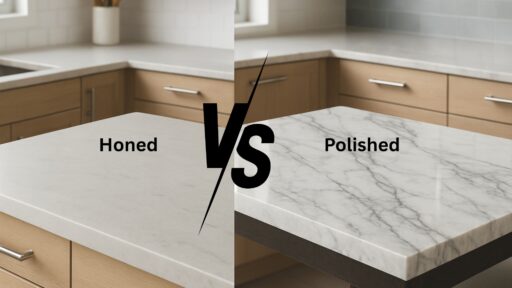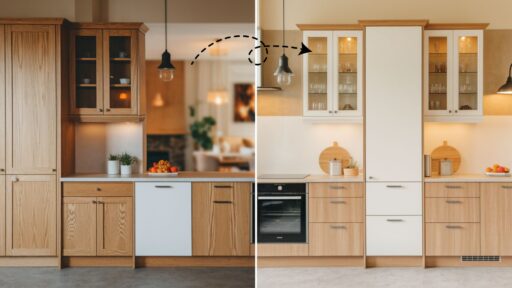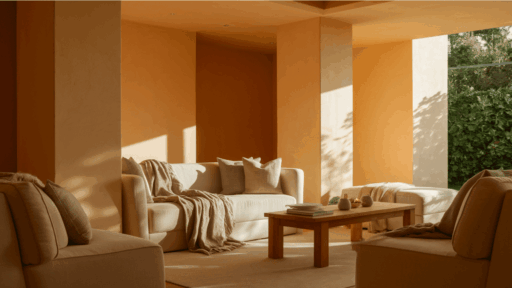Are you dreaming of marble countertops but worried about their reputation for being high-maintenance?
Honed marble countertops might be the perfect solution you haven’t considered yet.
Unlike their glossy cousins, these matte-finished beauties offer the timeless beauty of marble with practical benefits for everyday living.
With their soft, velvety feel and forgiving surface, honed marble countertops are gaining popularity in homes across America.
Are you planning a kitchen renovation? Maybe you’re updating your bathroom?
Understanding the difference between honed and polished marble can prevent costly mistakes.
The content covers everything you need to know about honed marble countertops.
We’ll cover maintenance tips too. These insights will keep your countertops looking gorgeous for years to come.
What is Honed Vs Polished Marble?
Marble comes in different finishes that change how it looks and feels in your home.
The two most popular types are honed and polished marble.
Each finish has its own special qualities and works best in different areas of your house.
Let’s look at what makes each one unique.
Honed Marble
Honed marble is marble stone that has been ground to a smooth, flat surface but not polished to a shine.
The process stops before the stone becomes reflective.
This creates a soft, matte finish that feels satiny to touch.
Honed marble shows fewer scratch marks and etching than polished marble.
It works great in busy areas of your home, like kitchens and bathroom floors.
Many people choose it because it hides small scratches better than polished marble and is less slippery when wet.
Polished Marble
Polished marble undergoes additional processing beyond honing, where the stone is buffed until it develops a glossy, mirror-like surface.
This finish seals more of the stone’s pores, making it somewhat less absorbent than honed marble.
The shiny surface makes colors look deeper and vibrant, highlighting the stone’s natural veining patterns.
Polished marble is best in places that don’t see heavy daily use, such as bathroom vanities, backsplashes, and formal living rooms.
These lower-traffic areas help preserve the beautiful glossy finish for years.
Key Differences Between Honed and Polished Marble
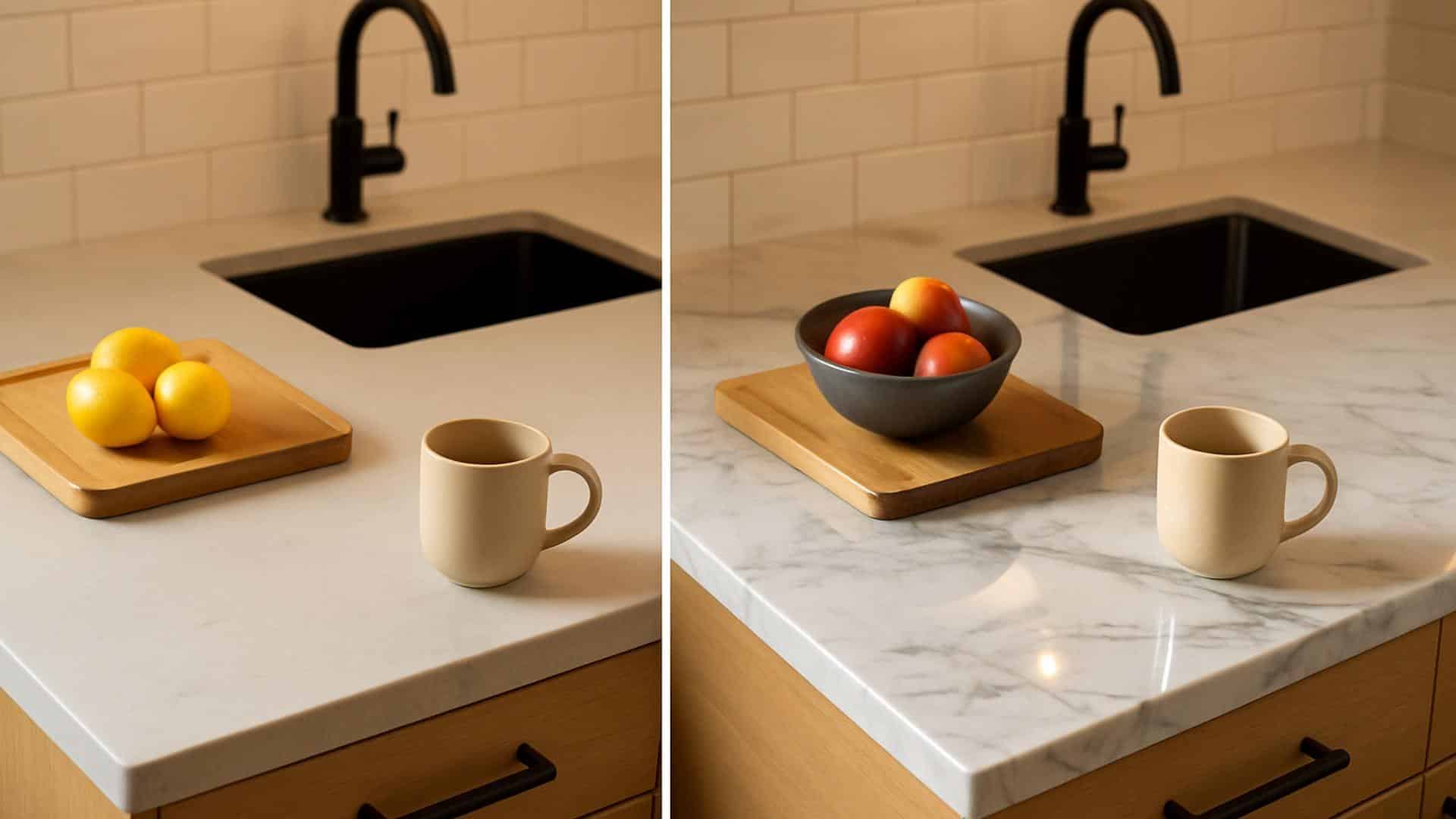
When choosing between honed and polished marble for your home, it’s important to understand how they differ.
These differences affect not just how the marble looks, but also how it performs in daily use and how much care it needs.
Here are the main ways honed and polished marble are different from each other.
1. Appearance & Finish
Honed marble has a soft, matte look that doesn’t reflect much light.
It appears more natural and understated, with colors that seem slightly more muted.
This gives spaces a warm, casual feeling that many homeowners prefer.
Polished marble, on the other hand, has a glossy, mirror-like shine that reflects light.
This enhances the colors and veining patterns, resulting in a formal, luxurious appearance that stands out in any room.
2. Durability & Scratch Resistance
Honed marble tends to hide scratches better than polished marble because its surface is already matte.
Small marks blend in more easily with the non-reflective finish.
While both types can scratch, damage is much more noticeable on polished marble, where scratches disrupt the shiny surface.
For busy households with children and pets, honed marble often proves more forgiving.
Neither type resists etching from acidic substances like lemon juice or vinegar very well.
3. Maintenance & Stain Resistance
Polished marble requires more frequent maintenance to keep its glossy shine.
It shows fingerprints, water spots, and smudges more easily than honed marble.
However, polished marble has an advantage when it comes to stain resistance.
Its tightly sealed surface repels liquids better, giving you more time to wipe up spills before they soak in.
Honed marble is more porous and needs more frequent sealing to prevent stains from coffee, wine, and oils.
4. Texture & Feel
The texture difference between these finishes is immediately noticeable when you touch them.
Honed marble feels smooth but not slippery, with a soft, almost velvety texture that many people find pleasing.
This makes it safer for floor applications, especially in bathrooms where water is present.
Polished marble has a slick, cool-to-the-touch surface that can be slippery when wet.
The different textures create distinct sensory experiences in your living space.
Pros and Cons of Honed vs. Polished Marble Countertops
Choosing between honed and polished marble depends on your lifestyle, aesthetic preferences, and how you’ll use the space.
This comparison highlights the key differences to help you make the right decision for your home.
| FEATURE | HONED MARBLE | POLISHED MARBLE |
|---|---|---|
| PROS | Hides scratches and etching better; Natural, understated aesthetic; Less slippery when wet. | Enhances color and veining dramatically; More stain-resistant surface; High-end, luxurious appearance. |
| CONS | More porous, requires frequent sealing; Stains more easily without prompt cleaning; Less vibrant coloration. | Shows scratches and smudges easily; Slippery when wet, safety concern; Requires regular maintenance. |
Consider your kitchen habits, maintenance preferences, and design goals when making your selection.
Many homeowners choose honed marble for busy family kitchens.
Polished marble often works well in showpiece spaces or low-traffic areas.
Which Finish Is Best for Your Home?

Selecting the right marble finish depends mainly on three factors: where you’ll use it, how you live, and your design style.
For busy kitchens, honed marble hides scratches well and doesn’t show fingerprints.
In bathrooms, consider honed marble for floors (less slippery) and polished for vanities (easier to clean).
For entryways and high-traffic areas, honed marble stands up better to daily wear.
Think about your lifestyle too, families with children and pets usually prefer honed marble’s forgiving nature.
Your design goals matter as well.
Polished marble creates a formal, glamorous look perfect for luxury spaces.
Honed marble offers a more relaxed, natural feel that works beautifully in rustic or understated modern homes.
Choose the finish that balances your practical needs with your design vision.
Can You Mix Honed and Polished Marble in the Same Space?
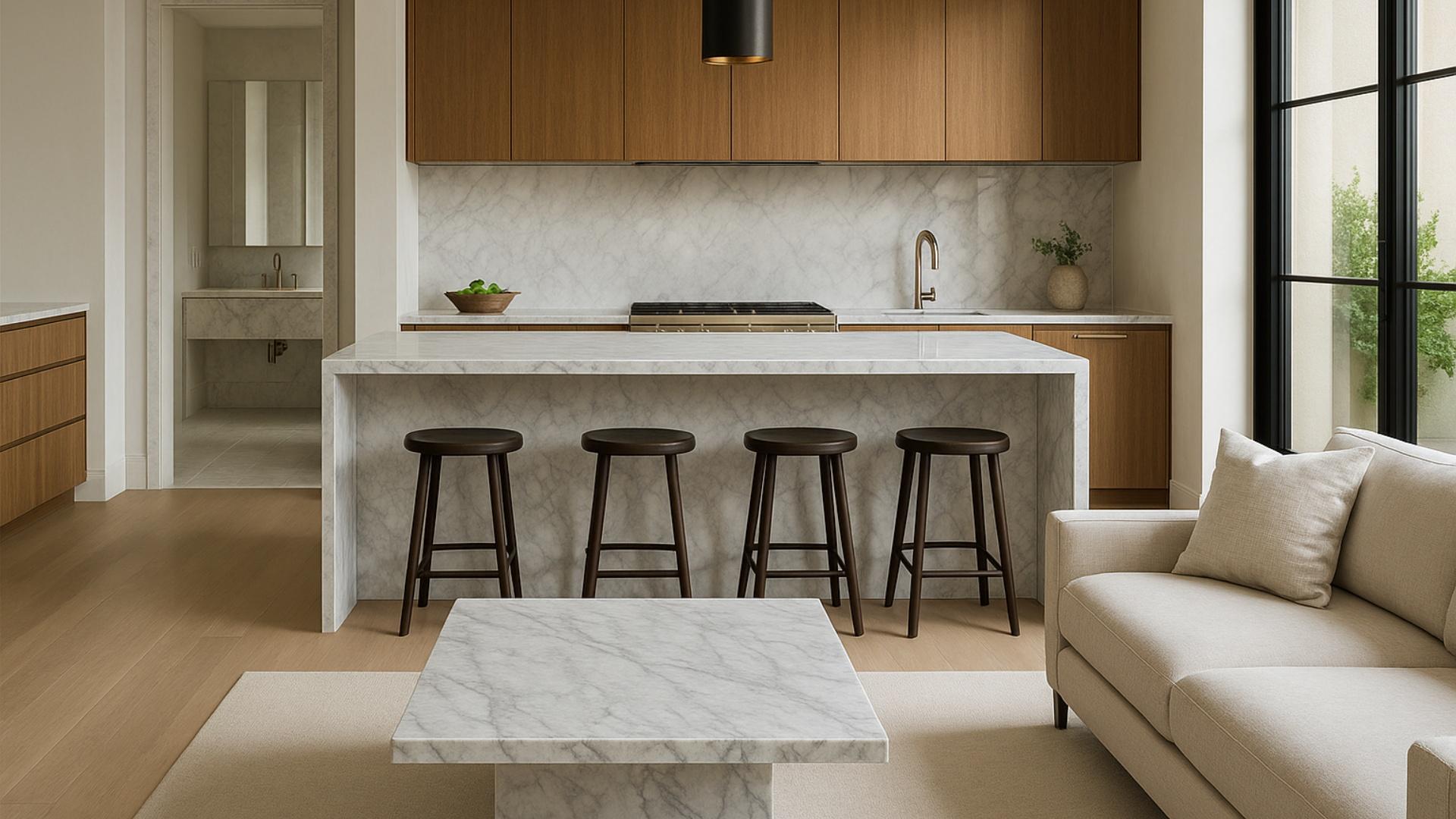
Yes, you can absolutely mix honed and polished marble in one space, and it often creates interesting visual contrast.
Many designers use this technique intentionally, like pairing a honed marble island with polished perimeter countertops in kitchens.
The key to success is using the same type of marble for both finishes so the color and veining remain consistent.
For best results, use polished marble in areas you want to highlight and honed marble where functionality matters more.
Keep the overall balance in mind; too many different finishes can look busy.
This mixing approach works especially well in open-concept spaces. It helps you define different zones.
It also works great in bathrooms. Honed floor tiles provide safety in wet areas.
Polished vanities add glamour to the same space. You can even mix finishes on the same piece.
Try a coffee table with a honed top and polished edges.
This creates a custom look. It combines the best features of both worlds.
Tips for Choosing and Maintaining Marble Finishes
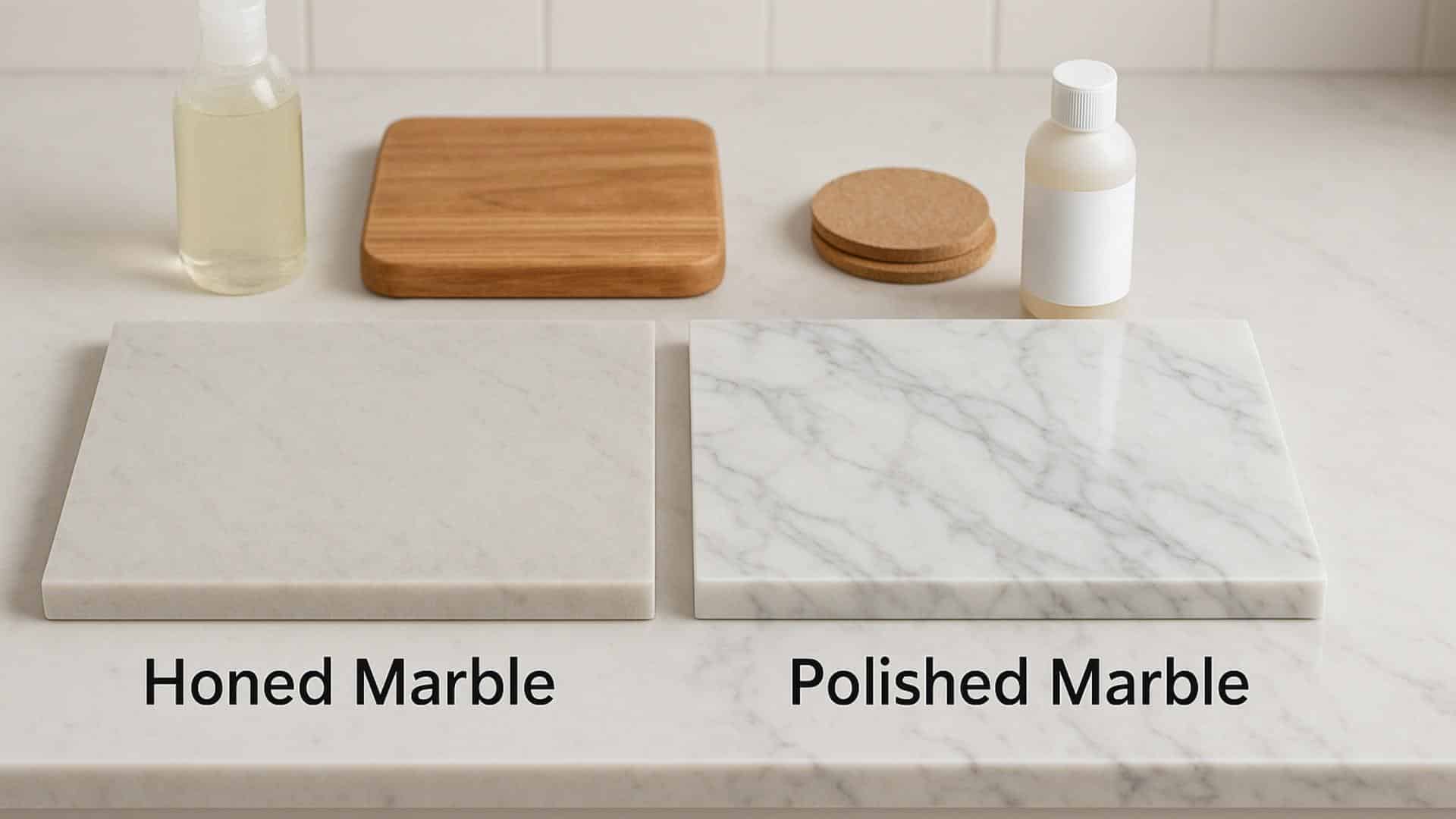
Before installing marble countertops, take time to ensure you’re making the right choice for your home.
These simple tips will help you select the perfect finish and keep it looking beautiful for years to come.
- Bring home large samples to test both finishes in your actual lighting.
- Seal honed marble every 3-6 months to prevent staining.
- Use only mild soap for cleaning; avoid acidic products on all marble.
- Protect surfaces with cutting boards, coasters, and trivets.
- Schedule professional refinishing every 5-10 years as needed.
Remember that all marble requires some maintenance.
With proper care, both honed and polished finishes will reward you with timeless beauty and lasting value in your home.
Wrapping It Up
Choosing between honed marble countertops and polished options comes down to your lifestyle.
Your aesthetic preferences matter too. So does your comfort level with maintenance.
Honed marble countertops offer a more forgiving, natural look. They work beautifully in busy households.
They still deliver the unique character that makes marble so desirable.
Remember that proper sealing keeps your honed marble countertops looking their best.
Every day care is important too. These habits will protect your marble for generations.
No matter which finish you choose, marble countertops remain a timeless investment.
They add both beauty and value to your home.
Ready to start? Visit local stone showrooms to feel the difference yourself.
Find the perfect match for your dream space.
Craving a new look for your space? Explore the latest trends and insights in interior design.

